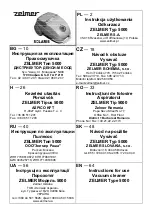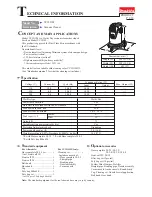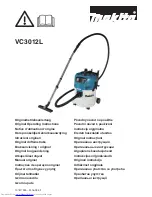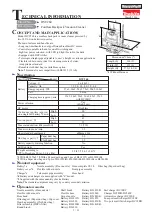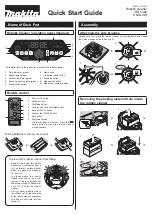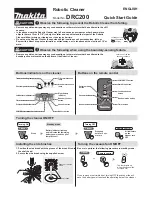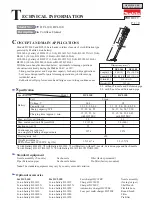
40
F. Controls and Safeties:
Operating controls and safeties shall be factory
selected, assembled, and tested. Minimum control
functions shall be as listed below:
1. Controls:
a. Capacity control valves on the compressor
shall be self-contained, electrically-actuated,
and suction cutoff.
b. Head pressure control shall be achieved by
fan cycling: One fan shall be cycled in
response to liquid pressure, and one fan
shall be non-cycling. Both fans shall be acti-
vated in the Heating mode.
c. Defrost control shall consist of a time and
temperature activated system that initiates
defrost periodically in response to a temper-
ature signal.
2. Safeties:
a. Low oil pressure switch cutout.
b. High discharge pressure cutout.
c. Loss-of-charge cutout.
d. Compressor motor current and temperature
overload cutouts.
e. Liquid line solenoid valve.
f. Filter drier in the Heating mode.
g. Device to hold the compressor off-line
until reset manually when any of the
following listed cutouts are tripped: High
discharge pressure, high temperature, and
loss-of-charge.
h. Compressor short-cycle protection control
to prevent compressor restart after shut-
down until a timed period has expired.
G. Electrical Requirements:
1. Factory supplied and installed transformer shall
provide 24 v control voltage.
2. All power and control circuit wiring shall com-
ply with local and national codes.
H. Special Features:
1. Low Ambient Control:
Control shall adjust fan motor speed in
response to the saturated condensing tempera-
ture of the unit. The control shall be capable
of maintaining a condensing temperature of
100 F ± 10 F with outdoor temperature at
–20 F.
2. Outdoor Thermostat:
Adjustable control shall activate electric strip
heaters in stages to provide supplemental heat.
Range: –30 F to 90 F.
3. Mounting Legs:
Legs shall hold the unit approximately 18 in.
off the ground to allow space for drainage.
4. Condenser Coil Grille:
Protects outdoor coil from large objects and
vandalism.
5. Optional Condenser Coil Materials:
a. Pre-Coated Aluminum-Fin Coils:
Shall have a durable epoxy-phenolic coating
to provide protection in mildly corrosive
coastal environments. Coating shall be
applied to the aluminum fin stock prior to
the fin stamping process to create an inert
barrier between the aluminum fin and cop-
per tube. Epoxy-phenolic barrier shall mini-
mize galvanic action between dissimilar
metals.
b. Copper-Fin Coils:
Shall be constructed of copper fins mechani-
cally bonded to copper tubes and copper
tube sheets. Galvanized steel tube sheets
shall not be acceptable. A polymer strip shall
prevent coil assembly from contacting sheet
metal coil pan to minimize potential for gal-
vanic corrosion between the coil and pan.
All copper construction shall provide protec-
tion in moderate coastal applications.
c. E-Coated Aluminum-Fin Coils:
Shall have a flexible epoxy polymer coating
uniformly applied to all coil surface areas
without material bridging between fins.
Coating process shall ensure complete coil
encapsulation. Color shall be high-gloss
black with gloss requirements of 60° of 65
to 90% per ASTM D523-89. Uniform dry
film thickness from 0.8 mil to 1.2 mil on all
surface areas including fin edges. Superior
hardness characteristics of 2H per ASTM
D3363-92A and cross-hatch adhesion of
4B-5B, per ASTM D3359-93. Impact resis-
tance shall be up to 160 in./lbs (ASTM
D2794-93). Humidity and water immersion
resistance shall be up to a minimum of
1000 and 250 hours respectively (ASTM
D2247-92 and ASTM D870-92). Corrosion
durability shall be confirmed through testing
to no less than 1000 hours salt spray per
ASTM B117-90. Coil construction shall be
aluminum-fins mechanically bonded to cop-
per tubes.
Guide specifications —
38AQS012,016 outdoor units (cont)




















